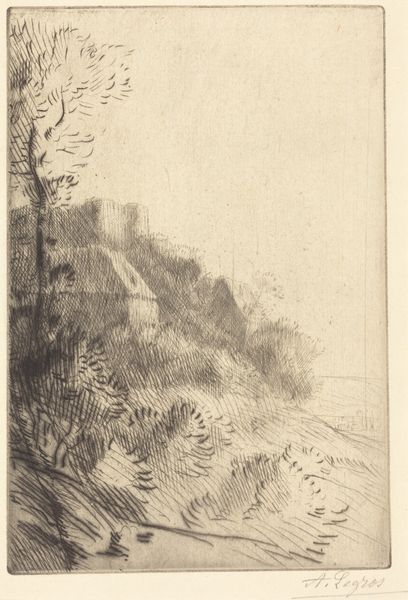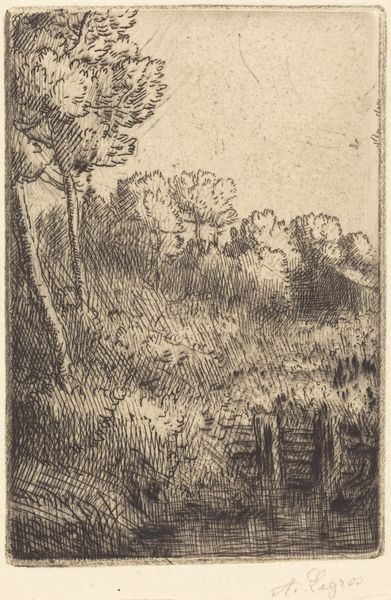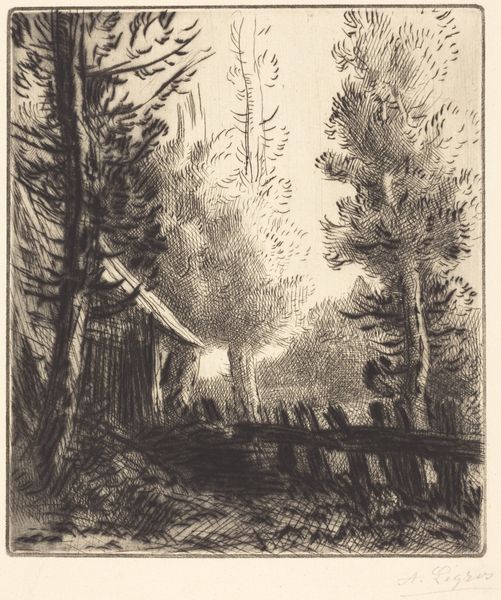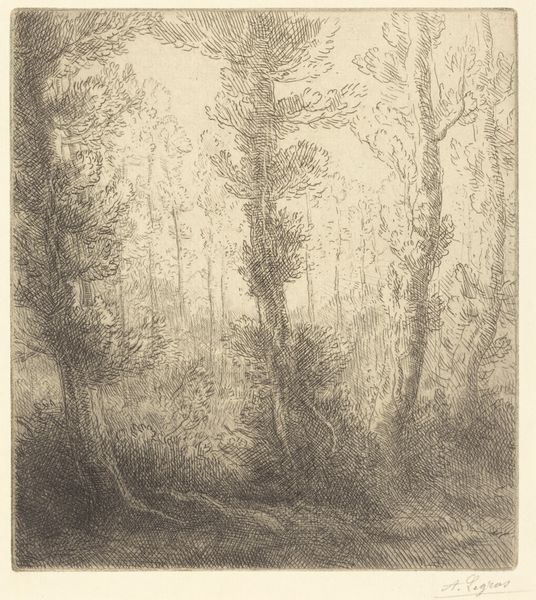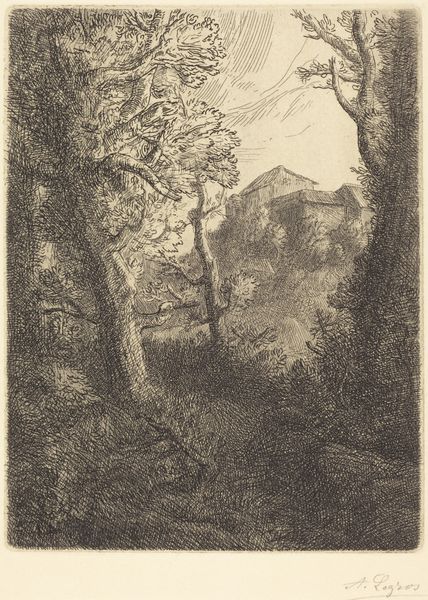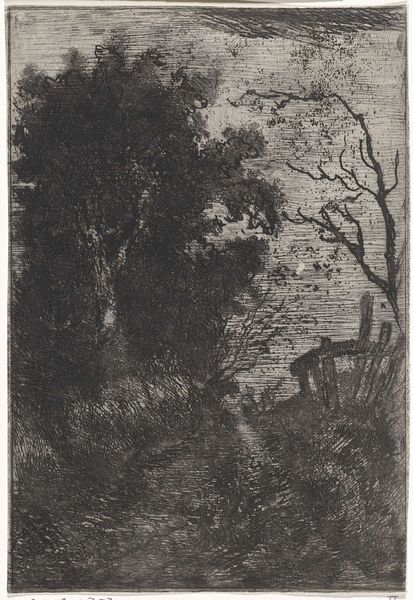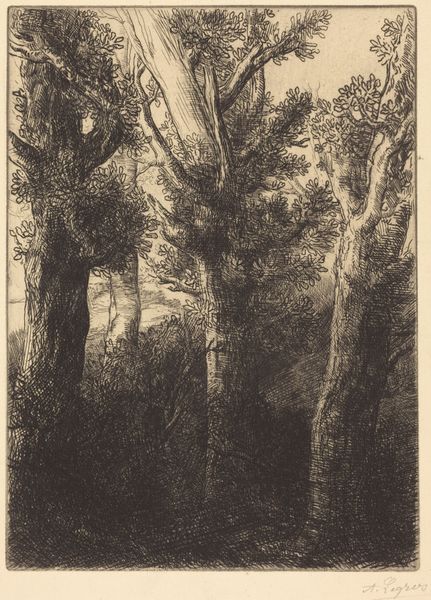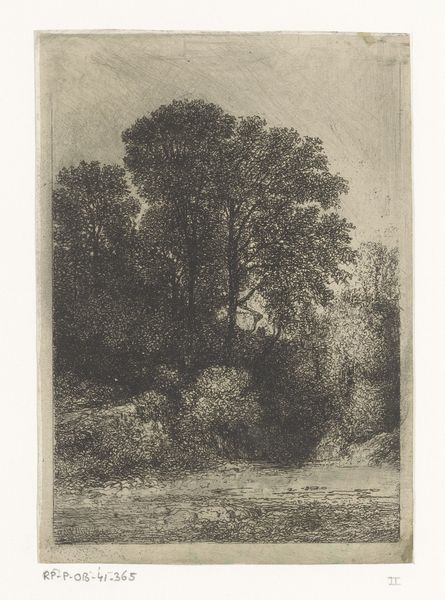
drawing, print, etching, ink
#
drawing
# print
#
pen sketch
#
etching
#
landscape
#
form
#
ink
#
romanticism
#
line
Copyright: National Gallery of Art: CC0 1.0
Curator: I find Alphonse Legros' etching, "Ruins of a Monastery," so evocative. It presents a skeletal architecture reclaimed by nature. Editor: Yes, there’s a certain melancholy about it. The dense, tangled lines creating a stark contrast with the soft, glowing void within the archway... a really palpable sense of loss and decay. Curator: It resonates with Romanticism’s fascination with ruins, doesn't it? The abbey whispers stories of a forgotten era. The etching style itself reinforces this—the intricate linework feels almost like the delicate cracks and fissures forming in aging stone. The symbol of monastic life, a center of learning, left to erode. Editor: Precisely. Monasteries held immense cultural power; Legros offers a potent comment on the transience of institutions. The way the structure dissolves into the landscape makes one think about shifts in political influence, or the changing perception of religious authority in 19th century France. Curator: And it's a compelling illustration of humanity's relationship with nature. We see it slowly asserting its dominance. Notice the small flock of birds—tiny signs of resilience. Editor: Definitely. It challenges the viewers to consider themes of abandonment and transformation—themes that have arguably haunted our collective consciousness through history. The ruins aren't just stone; they're laden with echoes of memory, cultural shifts and the subtle yet certain march of time. Curator: Legros clearly wanted the landscape and the etching itself to mirror a broader historical narrative of decline and resilience. It encourages reflection on how memory survives through changing visual forms. Editor: It does that powerfully. A very sobering statement about what becomes of human endeavors over time, visually recorded for our modern contemplation.
Comments
No comments
Be the first to comment and join the conversation on the ultimate creative platform.

